-
Karl Clark begins his long career investigating Alberta’s oil sands.
Karl Clark at work on his prototype separation plant, 1929
Source: Glenbow Archives, ND-3-4596a
-
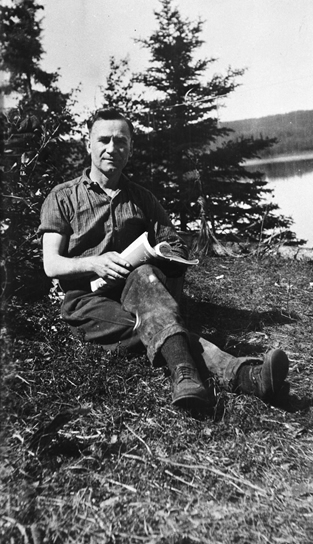
Robert Cosmas Fitzsimmons visits the Athabasca River and purchases an oil lease.
Robert Fitzsimmons at Bitumount, ca. 1920s
Source: Provincial Archives of Alberta, A3358
-
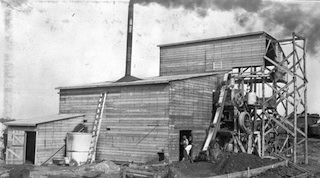
Karl Clark and Sidney Blair build prototype hot water separation plants.
Oil sands separation plant at Dunvegan Yards, Edmonton, 1925
Source: Provincial Archives of Alberta, A3526
-
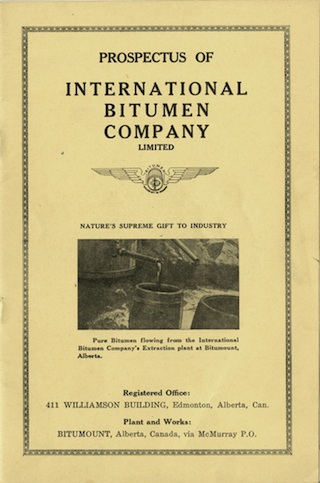
International Bitumen Company Ltd. is incorporated.
Prospectus for the International Bitumen Company Ltd., n.d.
Source: Provincial Archives of Alberta, PR1971.0356.544a,b.ProspectusOf.IBC.1
-
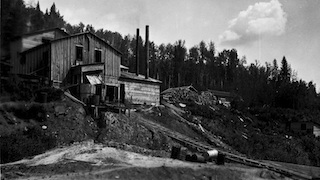
Karl Clark’s hot water separation plant moves to the Clearwater River, near Fort McMurray.
Oil sands separation plant on the Clearwater River, 1930
Source: Provincial Archives of Alberta, A3536
-
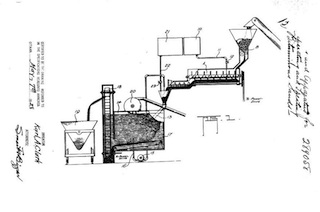
Karl Clark is issued Patent 289058 for “Bituminuous [sic] Sand Processing”.
Diagram of the process patented by Clark in 1929
Source: Canadian Intellectual Property Office, Patent 289058
-
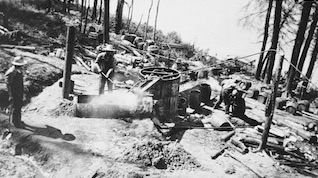
Robert Fitzsimmons builds his first separation plant at Bitumount.
Fitzsimmons’s separation plant, Bitumount, ca. 1930
Source: Provincial Archives of Alberta, A3383
-
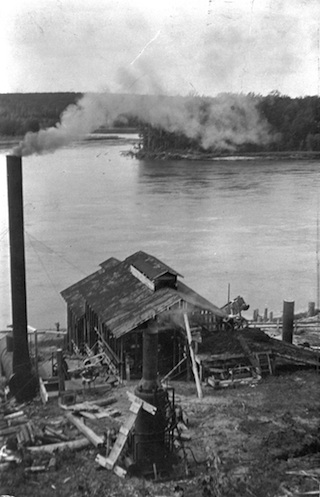
Robert Fitzsimmons builds a new plant designed to produce 200 barrels of oil per day, but it runs for only a short while.
New plant at Bitumount, n.d.
Source: Provincial Archives of Alberta, A3378
-
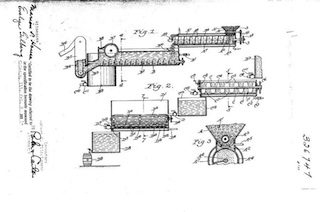
Robert Fitzsimmons is issued Patent 326747 for a “Process and Apparatus for Recovering Bitumen.”
Diagram of Fitzsimmons’s patented separation process, 1932
Source: Canadian Intellectual Property Office, Patent 326747
-
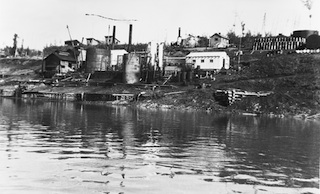
Robert Fitzsimmons builds a refinery at Bitumount.
The International Bitumen Company Ltd. plant, Bitumount, ca. 1937
Source: Provincial Archives of Alberta, PAA A3375
-
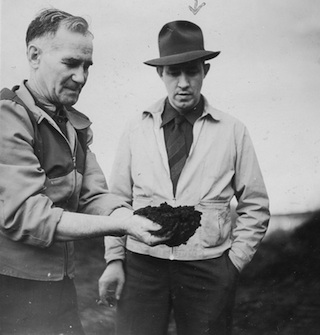
Montreal financier Lloyd R. Champion buys controlling interest in International Bitumen Company Ltd. and changes name to Oil Sands Ltd.
Fitzsimmons (left) shows Champion the oil sands at Bitumount, n.d.
Source: University of Alberta Archives, 83-160-113
-
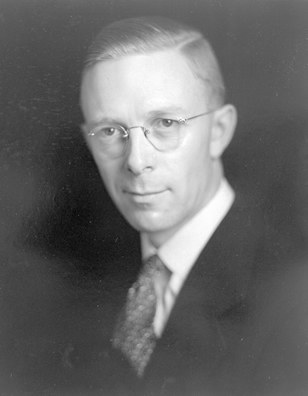
Ernest Manning, Premier of Alberta, announces a loan of $250,000 to Oil Sands Ltd. to build a prototype oil sands separation plant at Bitumount.
Ernest Manning in 1943
Source: Provincial Archives of Alberta, A483
-
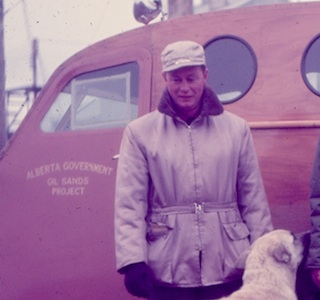
Agreement with Oil Sands Ltd. is cancelled. The Bitumount project becomes known as the Alberta Government Oil Sands Project.
Alberta Government Oil Sands Project, Bitumount, 1952
Source: University of Alberta Archives, 91-137-127
-
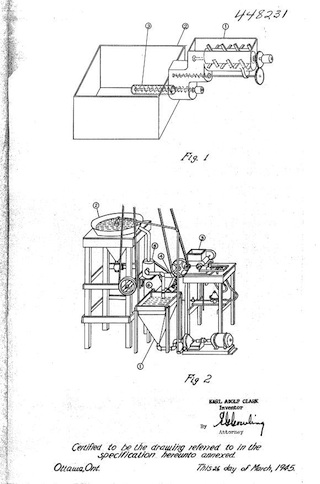
Karl Clark is issued Patent 448231 for “Extracting Oil from Bituminous Sand.”
Diagram of process patented by Clark in 1948
Source: Canadian Intellectual Property Office, Patent 448231
-
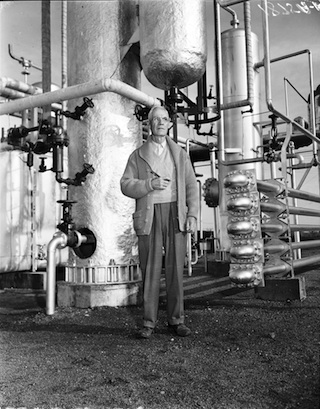
Alberta Government Oil Sands Project plant at Bitumount is completed.
Karl Clark at the completed Bitumount plant, n.d.
Source: Provincial Archives of Alberta, PA410.3
-
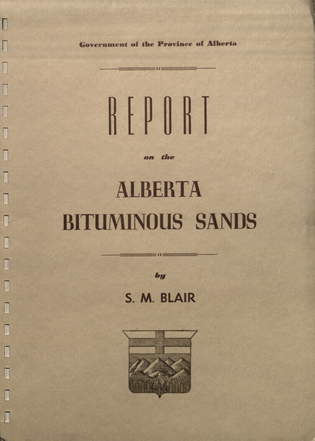
Blair Report indicates that developing the oils sands could be profitable.
Cover of Sidney Blair’s Report on the Alberta Bituminous Sands, 1950
Source: Provincial Archives of Alberta, PR1971.0345.box24.503
-
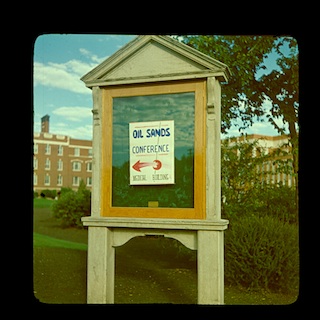
Over one hundred delegates attend the Athabasca Oil Sands Conference at the University of Alberta.
Poster on the University of Alberta Campus, 1951
Source: University of Alberta Archives, 91-137-122
-
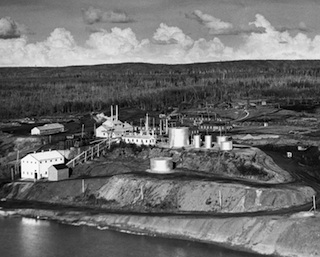
Government of Alberta puts the Bitumount plant and 5,784 acres up for sale, but does not receive any adequate bids. The plant remains non-operational.
Bitumount, ca. 1949-1950
Source: Glenbow Archives, pa-1599-451-2
-
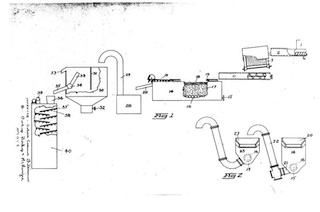
Robert Fitzsimmons is issued Patent 493081 for a “Process for Recovering Bitumen from Tar Sands.”
Diagram of Fitzsimmons’s patented 1953 separation process
Source: Canadian Intellectual Property Office, Patent 493081
-
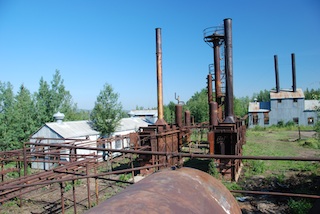
Bitumount plant is sold, but no significant development occurs and it is finally abandoned in 1958.
The Bitumount site became overgrown in the years following its abandonment.
Source: Historic Resources Management, DSC_1720
-
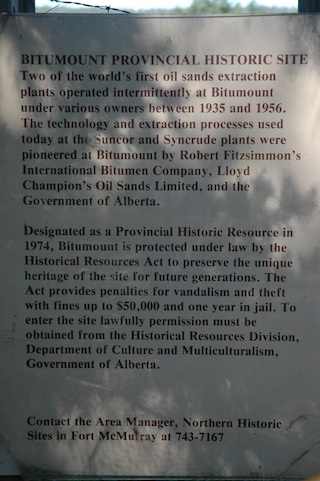
Bitumount is designated a Provincial Historic Resource.
Sign at the Bitumount site, 1980s
Source: Historic Resources Management, DSC_5896